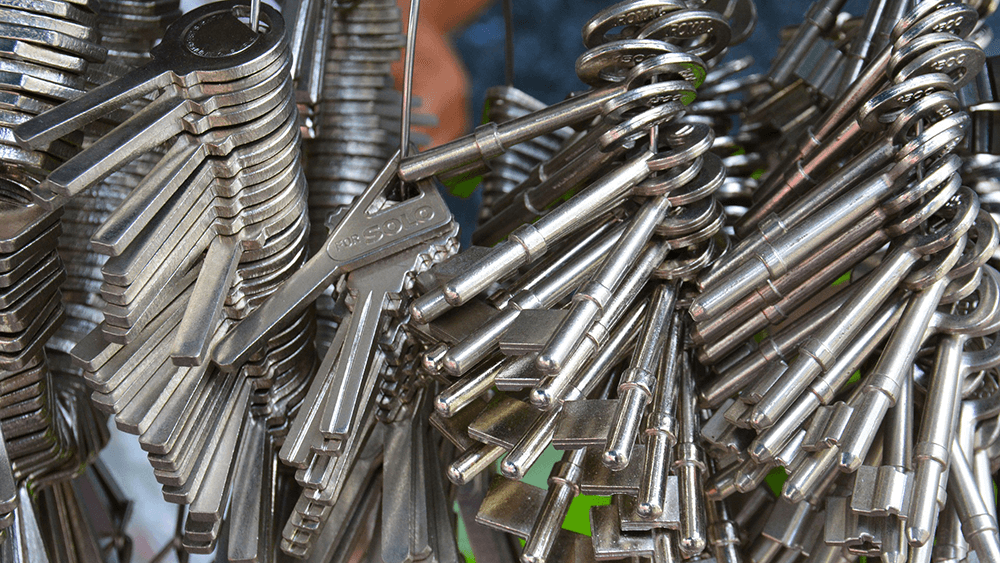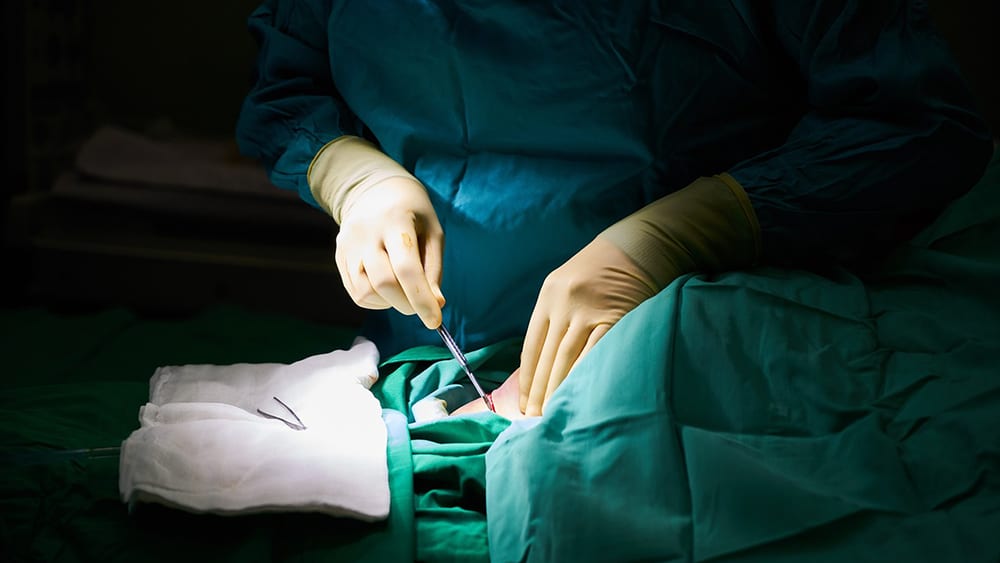
Nov 21, 2018 | Immunology, Microbiome, Research
by Elise Wachspress
If you think the invention of the microscope was a pivotal moment in the development of biological knowledge, you might be pretty impressed with the flow cytometer.
This technology allows scientists to “see” an entire stream of individual cells, detecting the features of each as they rush single file through a tiny tube. A laser (or sometimes several) shines through or bounces off the cells as they pass by. Depending on the specific kinds of fluorescent indicators applied, flow cytometry can efficiently characterize 30 or more factors in hundreds of thousands of individual cells and even sort them as they surge through the tube.
For scientists studying the microbiome, the immune system, and their intersection, flow cytometry—we celebrate its 50th anniversary this year—was a breakthrough. The tool provides an efficient way to both distinguish the various bacteria in a sample and identify human immune cells and the particular antibodies they carry.
Last fall, a team led by Jeffrey Bunker (a student in the University of Chicago’s revered Medical Scientist Training Program) and his mentor, Albert Bendelac, MD, PhD (A.N. Pritzker Professor of Pathology) used flow cytometry to understand an important interaction between the gut and the bacteria that live there.
The gut is the source of large quantities of immunoglobulin A (IgA), the most abundant antibody protein in mammals. In our intestines, where we depend on a diverse community of bacteria to digest our food and make important by-products like vitamins, IgA sticks to the surfaces of the microbes, allowing them do their work while keeping them from settling in on the mucous membranes that line the gut. These membranes are the critical barrier that separates the energy furnace in our intestines from the rest of our bodies.
But how do IgA proteins—which defang bacteria with a kind of key-in-lock technique—recognize the many different kinds of bacterial locks and latch so specifically on to each? Thanks to flow cytometry, the team could identify the many types of bacteria involved, so they knew the complicated job IgA was up against.
What they found was that IgA cells in the gut were “polyreactive”: they could clasp very specifically onto many different types of bacteria. This Swiss-army-knife ability was not the result of intervention by other parts of the immune system or hyperactive mutations within the IgA cells themselves. Even changes in diet (and the presumed alterations in the balance of bacteria induced by these changes) did not significantly affect their ability as quick-change artists.
This research demonstrated that IgAs, part of our adaptive immune system, actually have the innate—born in—ability to recognize individual types of bacteria, even new ones, and do what they need to do to create the right latch. The takeaway is that the bacteria in our guts and our own immune systems have clearly been evolving together, probably for millennia, and that the immune systems of new humans have innate ability to recognize “old” bacteria—those that have been fellow travelers with the human race for generations.
This is just one more bit of evidence that none of us are truly individuals. Each human being is a colony of species living together in community—communities with very long histories and intense cultures—and we’re wise to go with the flow.
This past summer, Bunker and Bendelac went on to publish a major review article on IgA biology for the journal Immunity. There they presented a new framework integrating two distinct types of immunity that protect the gastrointestinal mucus membranes: the polyreactive IgA described above and much more “bespoke” key-and-lock responses to pathogens and vaccines provided by other kinds of immune cells.
Elise Wachspress is a senior communications strategist for the University of Chicago Medicine & Biological Sciences Development office

Oct 31, 2018 | Immunology, Microbiome, News Roundup, Research
A selection of health news from the University of Chicago and around the globe curated just for you.
Three UChicago Scientists Earn NIH Grants to Pursue Innovative Research
Three UChicago scientists—including Jun Huang, who studies the immune system and its role in treating infectious diseases and cancer—each have been awarded $1.5 million grants over five years from the National Institutes of Health in support of their innovative, high-impact biomedical research. (UChicago News)
Noah’s Ark for Microbes
A team of researchers, including Jack Gilbert, is calling for the creation of a global microbiota vault to protect the long-term health of humanity. (Science)
These 19 MassChallenge Startups Just Won $1.65M
Nineteen early-stage startups, including Oxalo Therapeutics, won a total of $1.65 million at Wednesday night’s MassChallenge awards ceremony. (BostInno)
Polsky Opens its High-Profile Accelerator to Alumni Startups
UChicago’s New Venture Challenge, ranked among the top accelerator programs in the country, is launching an alumni track as part of its annual startup competition. (American Inno)
Meet the Carousing, Harmonica-Playing Texan Who Just Won a Nobel for his Cancer Breakthrough
This year, the Nobel Prize was awarded to James Allison, PhD—a colleague, friend, and “The Checkpoints” bandmate of Tom Gajewski—for research that laid the groundwork for the development of checkpoint inhibitor immunotherapies. (WIRED)

Sep 28, 2018 | Commercialization, Food Allergies, Microbiome, News Roundup, Research
A selection of health news from the University of Chicago and around the globe curated just for you.
The end of an epidemic
The number of people with food allergies has exploded in recent years. A dream team of researchers from UChicago may have figured out why, and now they’re developing therapies that could end the epidemic. Cathy Nagler featured. (Chicago magazine)
UChicago startup gets $2.3 million for kidney stone prevention
Biotechnology startup Oxalo Therapeutics is closer to developing a first-of-its-kind drug to prevent kidney stones thanks to $2.3 million from the National Institutes of Health. Hatim Hassan and Yang Zheng featured. (Crain’s Chicago Business)
Science by the sea
In three weeks, there are just over 500 hours. The students in the Marine Biological Laboratory’s September intensive courses tried to use them all. Jack Gilbert featured. (UChicago Magazine)
Nasal bacteria linked to cold severity
In a study, people with certain bacteria in their noses were more likely to develop more severe cold symptoms. (U.S. News & World Report)
Brain-gut link may be way faster than we thought
New research with mice may upend our understanding of the connection between the gut and the brain, as well as appetite. (Futurity)

Aug 29, 2018 | Cancer, Commercialization, Microbiome, News Roundup
A selection of health news from the University of Chicago and around the globe curated just for you.
UChicago awarded $1 million grant to study microbiome dynamics
Researchers from UChicago have received a $1 million grant from the W.M. Keck Foundation to study how the molecular activity of the microbiome changes in response to the environment. Eugene Chang and Tao Pan featured. (The Forefront)
Reliable point-of-care blood test can help prevent toxoplasmosis
A recent study, performed in Chicago and Morocco found that a novel finger-prick test can accurately predict infection with the parasite Toxoplasma gondii during pregnancy. Rima McLeod, whose broader work is reported in an earlier WellNews post, featured. (The Forefront)
‘Zombie gene’ protects against cancer—in elephants
With such enormous bodies, elephants should be particularly prone to tumors. But an ancient gene in their DNA, somehow resurrected, seems to shield the animals. Vincent Lynch featured. (New York Times)
Hospital bacteria are starting to tolerate hand sanitizer
Strains of bacteria have developed increased tolerance to the alcohols in hand sanitizers, which requires hospitals to rethink how they protect patients from drug-resistant bacteria. (Futurity)
Oxalo Therapeutics among recipients of scholarships from drug accelerator
Cydan II Inc., an orphan drug accelerator dedicated to creating therapies that impact the lives of people living with rare genetic diseases, announced it has selected four start-up organizations and companies, including Oxalo, to receive $5,000 scholarships to support innovations that impact the lives of people with rare conditions. (BusinessWire)

Jul 31, 2018 | Food Allergies, Microbiome, News Roundup, Research
A selection of health news from the University of Chicago and around the globe curated just for you.
Anglerfish and their headlamp bacteria have a crazy relationship
Researchers have sequenced and analyzed the genomes of the glowing bacteria living in the bulbs that hang off the heads of anglerfish. (Futurity)
Can a cat-poo parasite turn you into a millionaire
Scientists have discovered that people infected with toxoplasmosis are more go-getting. But that doesn’t mean we should all be trying to catch it. (The Guardian)
What the mystery of the tick-borne meat allergy could reveal
Unraveling why tick bites are suddenly causing a strange reaction in some people who eat meat could help scientists better understand how all allergies work. (The New York Times Magazine)
Could viruses attacking the microbiome be responsible for inflammatory bowel disease?
New research done in a mouse model of inflammatory bowel disease (IBD) has suggested that viruses called phages, which have the ability to infect and kill gut bacteria, may be involved in the disease. David Rubin featured. (Forbes)
Celiac disease: A look at what triggers it, possible prevention
Bana Jabri and colleagues at UChicago have found that a common, but mostly harmless, virus could trigger celiac disease. (KPRC 2 Houston)

Jul 26, 2018 | Microbiome, Research, Surgery
by Claire Stevenson
Graduate student in the Committee on Development, Regeneration and Stem Cell Biology
John Alverdy, MD, is a gastrointestinal surgeon and researcher studying the mechanisms by which patients develop infections after surgery and figuring out how best to treat—and prevent—them.
“Research suggests that applying microbiome medicine … to surgical patients will change everything.” Alverdy offered that assessment recently on receiving the Flance-Karl Award for seminal contributions to the field of surgical science. The award was presented at the 103rd Clinical Congress of the American Surgical Association, the most prestigious society in the world aimed at keeping physicians up to date in the field.
Surgical site infections can be debilitating and life-threatening, increasing the risk of death after surgery up to 11-fold, even with advances in medical techniques. Alverdy has committed a large portion of his career to understanding how these infections develop following routine surgery.
He questions the assumption that all infections are caused by bacteria that enter the body during the surgical procedure. “Killing as many threatening microbes as possible prior to surgery, although a common practice, remains questionable from a scientific standpoint,” Alverdy says. His research suggests that the patient’s own microbiome, especially the microorganisms that live in each of our guts, could play a key role in these infections. Perhaps simply keeping our own resident bugs healthy and happy may actually make more sense than broadly eliminating all bacteria.
Microbes can exist in two states, a stable low-growth state and a virulent one, and they transition between these states based on cues from their environment. Alverdy reasoned that our bodies could harbor microbes that are normally innocuous, but which can switch to the harmful state when threatened, as when they have inadequate resources to support growth and reproduction.
In intestinal operations, wounds are normally colonized by gut bacteria. Alverdy and his team demonstrated that alarm signals from the patient’s own tissues and diminishing resources can shift normal bacteria to a more harmful state, significantly impairing healing. Sometimes, these normally helpful bacteria can express enzymes and toxins that cause a leak in the gut repair or other major complications.
Alverdy and his team reasoned it might be more effective to provide local resources to resident bacteria, shielding them from the patient’s alarm signals, in lieu of the traditional broad kill approach with antibiotics. By supporting the health of our normal bacteria, it might be possible to preserve them and thus keep the potentially harmful ones at bay. Alverdy’s lab is thus working to identify the “local public goods” the “good” microbes are missing in their environment and provide these directly to tissues at risk for infection.
Every individual’s microbiome is different, influenced by factors that include diet, travel, medications, and home environment. This could explain why, among patients who have been treated with the same high level of care, some develop infections while others do not. According to Alverdy, “It is time we recognize that any given individual’s disease is biologically unique,” and that, “a one-size-fits all approach to preventing infectious-related complications in surgery … will always be insufficient.”
Work like Alverdy’s, on the microbiome’s role in surgical infections, has the potential to revolutionize patient care. According to him, this could change, “the way we diagnose our patients, our approach to preparing them for surgery, the way we operate, and the way we feed and rehabilitate them postoperatively.” This could even lead to individualized medicine, where each patient’s microbiome is tested prior to surgery and their care is adjusted appropriately. The Duchossois Family Institute’s investment in microbiome research will be a part of turning this vision into a reality.









